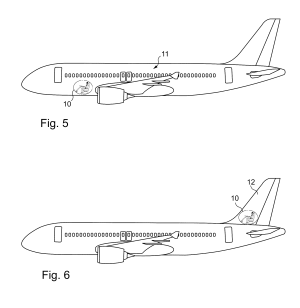
The FAA thinks FPV should be illegal while the airline industry is filing patents on flying airliners with no windows.
An article published in the Seattle Post-Intelligencer the other evening describes a patent application from European aerospace company Airbus in which pilots fly aircraft entirely through electronic means. The patent application, number US20140180508 A1, is titled "Aircraft with a cockpit including a viewing surface for piloting which is at least partially virtual" and notes that while an aircraft’s cockpit must be located in its nose to afford its pilot forward visibility, the physical requirements of the cockpit’s shape and the amount of glass required are aerodynamically and structurally non-optimal.
"For aerodynamic reasons," explains the patent application’s description, "the nose should ideally be lancet-shaped. However, the housing in the nose for radar, a landing gear, and especially for the cockpit, requires a much more complex shape and structure to be provided, with numerous radii of curvature." It would be better, says the patent, if the cockpit were moved into some other area of the aircraft and the pilot equipped with entirely electronic means of observing and controlling the aircraft’s flight.
According to the application, the non-windows cockpit would contain "a screen and associated means for projection (including back-projection)" of various "scenes," including the environment immediately forward of the aircraft, and also "a device with lasers for forming a holographic image" to display items like "a 3D mesh of the earth’s surface," "a hologram representing for example an assistant pilot on the ground," or "a holographic representation…of one or more flight instruments."
The lack of "glazed surfaces" (i.e., glass or other transparent elements) means that the cockpit itself could be free of the "numerous structural reinforcements" required to support the typical weight of glass as opposed to the same amount of aluminum. It also means that the cockpit could be placed literally anywhere inside the aircraft’s volume, including in the cargo hold or even in or near the aircraft’s empennage.
http://arstechnica.com/gadgets/2014/07/airbus-submits-patent-application-for-windowless-jet-cockpit/